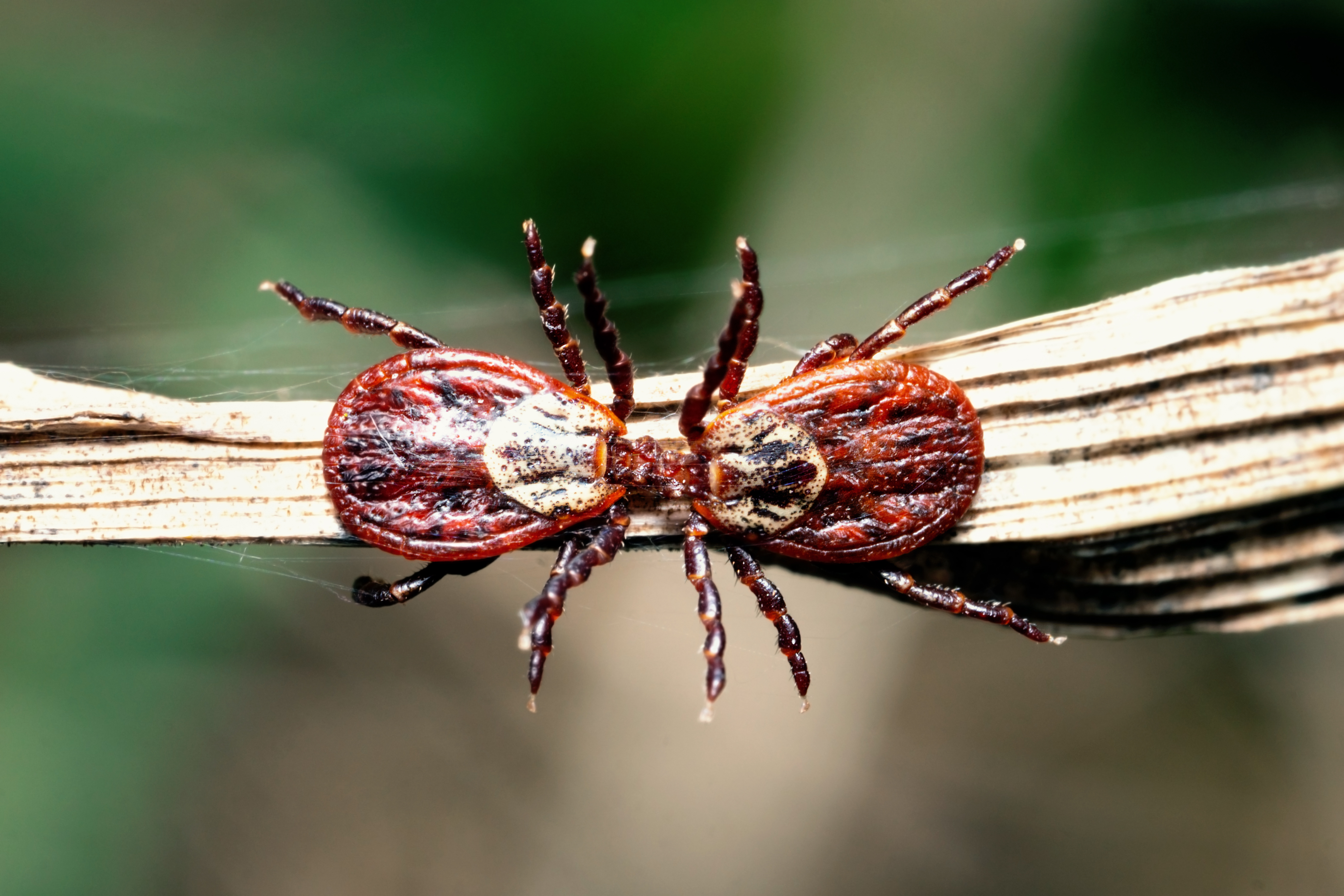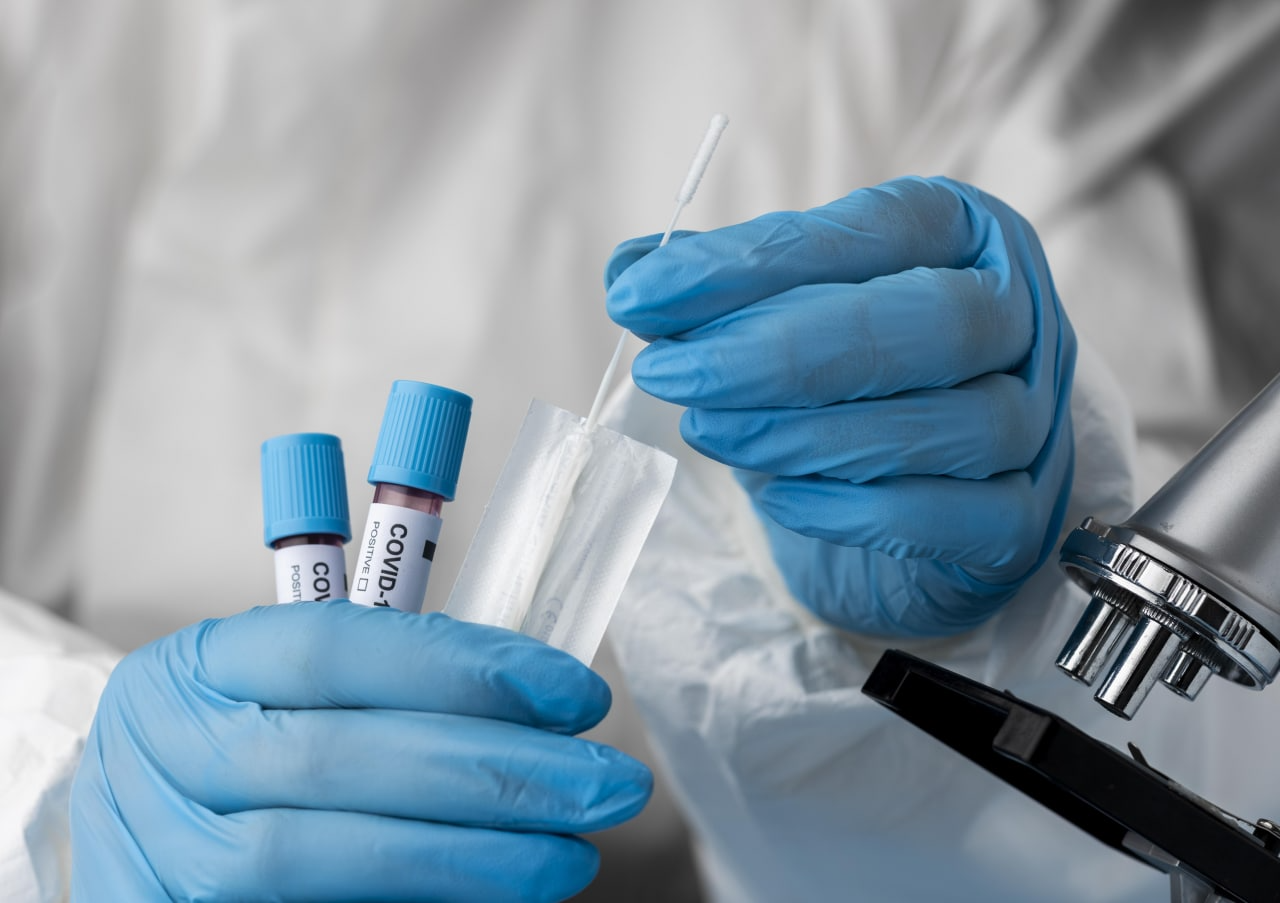Published by: Diana Luai Awad, Dr Pharmacist on Wednesday 16. December 2020
Treatment and therapy of Lyme disease in HIV-positive patients
Lyme disease, also known as tick-borne borreliosis, (ICD-10 code A69.2) is a vector-borne natural focal infectious disease caused by spirochetes and transmitted by ticks. This disease attracts infectious disease as well as other medical specialties experts’ attention. The disease tends to be featured with a chronic recurrent course and predominant damage to the skin, nervous system, musculoskeletal system and heart.
The article presents four neuroborreliosis (Lyme disease) case histories in HIV-positive men.
Patient 1
Alcohol dependence and depression are parts of this 60-year-old patient’s medical background. Therefore his treatment included disulfiram and a selective serotonin reuptake inhibitor (SSRI). He was diagnosed with HIV-1 23 years ago and started taking antiretroviral therapy (ART), including lamivudine, tenofovir and ritonavir-boosted atazanavir, 3 years ago. After two years of ART, the patient got bitten by a tick. However, erythema migrans didn’t occur. Within a year he was hospitalized with confusion, psychomotor agitation, and hyponatremia (serum Na was 116 mmol / L versus 135 mmol / L), and decline in cognitive function. He had stopped taking ART a month before going to the hospital after steady decline in compliance. Several factors were attributed to hyponatremia:
- water intoxication
- SIADH (syndrome of inappropriate secretion of antidiuretic hormone)
- taking SSRIs.
Gradually, the blood sodium level was restored, along with psychomotor agitation and confusion being relieved, but decline in cognitive function remained. In addition, the patient complained about asthenia and radicular pain in both legs. CT scan of the brain detected no pathology. Cerebrospinal fluid (CSF) test done in four weeks after hospitalization showed significantly increased albumin and mononuclear cells levels. Positive antibody titers indicated acute neuroborreliosis. Oral doxycycline 200 mg was prescribed twice daily for 10 days. Taking ART was resumed at once. Three weeks later, the pain syndrome and asthenia were reduced. The number CSF mononuclear cells decreased significantly. Half a year later the symptoms continued to relieve, the number of mononuclear cells in the CSF restored.
Patient 2
This 39-year-old man was infected with HIV six years earlier. Two years later Guillain-Barré syndrome (acute polyradiculoneuritis) was diagnosed. He was treated with intravenous immunoglobulin and started ART (stavudine, lamivudine, saquinavir and nelfinavir) for nine months. Guillain-Barré syndrome resolved. This time the patient came to the hospital with a slowly increasing headache, weakness in legs and the right arm tremor. At the time of the visit, he was not taking ART, CD4 + lymphocytes level was 390 cells / μL. Two days before the visit, vertigo and hearing loss on the right occured. MRI detected a pontine infarction. Albumin and CSF mononuclear cells levels were significantly increased. Borrelia-antibody titers in the CSF and blood plasma and positive Borrelia antibody index indicated acute neuroinfection.
Oral doxycycline 200 mg was prescribed twice daily for 19 days. Headache, asthenia and tremors began to decrease within three days of antibiotic therapy, but hearing did not restore. Repeated lumbar punctures detected a decrease in albumin and CSF mononuclear cells. Being examined six months later, hearing did not recover, no other neurological symptoms were detected, and he does not take ART.

Patient 3
The man had been diagnosed with HIV 7 years earlier at the age of 55. The viral load was high, and the CD4 + lymphocyte level was low (180 cells / μL). After being diagnosed, ART treatment was taken for one year (lamivudine, zidovudine, ritonavir-boosted lopinavir). Four years later, ART was resumed with efavirenz, abacavir, and lamivudine. Within a year the patient noticed a change in the taste of coffee, next months asthenia and unsteadiness were growing, tremors, urinary incontinence and headaches appeared. CT scan detected normal-pressure hydrocephalus (NPH). Six months later, increased levels of protein and mononuclear cells were found in the CSF. Culture and PCR tests for opportunistic infections were negative, but cytological examination indicated a neurotropic infection. CSF retest and a blood test in 4 months showed high Borelia-antibodies titers and a positive antibody index, which indicated neuroborreliosis. Oral doxycycline 200 mg was prescribed twice daily for 10 days. The strange taste of coffee and the other symptoms were relieved on the fifth day of treatment. Within next two months, the symptoms were almost completely resolved, and the CSF indicators restored.
Patient 4
The man had been diagnosed with HIV 5 years earlier at the age of 45. The exact moment of infection was not identified. The patient had been taking ART treatment for 4 years. The first regimen (lamivudine, zidovudine, ritonavir-boosted lopinavir) was eventually replaced with the other one (efavirenz, emtricitabine, and tenofovir). After ART, the level of CD4 + lymphocytes increased from 180 to 450 cells / μL.
The symptoms were severe: fever, headache, rash, which was later identified as erythema migrans. A few days later, the patient experienced right-sided facial paralysis. CSF showed increase in albumin and mononuclear cells levels. Borrelia IgM titer was high, but IgG was not. Oral doxycycline 100 mg was prescribed twice daily for 21 days. The symptoms were relieved soon after the treatment had begun. Being examined two months later he was still complaining about the right half facial hypo-sebsibility, the composition of the CSF and the level of albumin restored, and Borellia IgG began to be detected in the CSF and blood serum.
Discussion
The combination of Lyme disease and HIV in patients is not well-investigated. The epidemiological characteristics of the two infections overlap slightly: HIV infection is more common in citizens [1], while Lyme disease is more common in rural population.
All four patients’ CSF had severe mononuclear pleocytosis with levels higher than those observed in patients with HIV [2]. In the first three cases, the patients had high Borrelia IgG titers in the blood plasma and CSF, and the fourth patient experienced seroconversion from negative to positive IgG in the blood and CSF after the acute phase of the disease. All the patients responded to doxycycline therapy quickly. Laboratory tests did not indicate syphilis and other bacterial, viral and fungal neuroinfections.
Five previously described cases of HIV-1 and Lyme borreliosis co-infection the clinical picture was typical, including bilateral facial paresis [1], headache [3], meningoradiculitis [4]. These patients were prescribed third-generation cephalosporin treatment. Four of them recovered completely, however, the woman’s disease was severe and encephalomyelitis symptoms remained (walking disorder and problem in moving hands) [5].
More severe Lyme borreliosis developed in the three patients described above: the first one had severe cognitive deterioration, the second one experienced pontine infarction, and the third one suffered normotonic hydrocephalus. The first patient’s alcohol dependence and the second patient’s Guillain-Barré syndrome may have had an impact on the clinical course of neuroborreliosis. The atypical clinical picture could also be related to a long subacute course of borreliosis before it had been diagnosed (a few months in the second patient’s case and a year in the third patient’s one). In addition, none of the severely ill patients had normal CD4 + lymphocyte level.
Lyme disease seldom shows as an ischemic stroke [6] and hardly ever as normotonic hydrocephalus. Although the European Federation of Neurological Communities [7] recommends IV ceftriaxone for patients with neuroborreliosis, our experience suggests that oral doxycycline may be an excellent replacement for HIV patients.
It is worth mentioning that in the first three patients, the HIV viral load in the CSF was higher than in the blood plasma at the time when borreliosis was diagnosed. This indicates a concomitant inflammatory response in the central nervous system and viral load increase due to lymphocytes penetration the BBB, perhaps a Trojan horse alike[8]. HIV-positive patients showed the same clinical picture with cryptococcal and tuberculous meningitis [9].
[1] Garcia-Monco JC, Frey HM, Villar BF, Golightly MG, Benach JL: Lyme disease concurrent with human immunodeficiency virus infection. Am J Med. 1989, 87: 325-328. 10.1016/S0002-9343(89)80158-5. CAS Article PubMed Google Scholar
[2] Hagberg L, Forsman A, Norkrans G, Rybo E, Svennerholm L: Cytological and immunoglobulin findings in cerebrospinal fluid of symptomatic and asymptomatic human immunodeficiency virus (HIV) seropositive patients. Infection. 1988, 16: 13-18. 10.1007/BF01646922. CAS Article PubMed Google Scholar
[3] Dudle G, Opravil M, Luthy R, Weber R: [Meningitis after acute Borrelia burgdorferi infection in HIV infection]. Dtsch Med Wochenschr. 1997, 122: 1178-1180. 10.1055/s-2008-1047745. CAS Article PubMed Google Scholar
[4] Cordoliani F, Vignon-Pennamen MD, Assous MV, Vabres P, Dronne P, Rybojad M, Morel P: Atypical Lyme borreliosis in an HIV-infected man. Br J Dermatol. 1997, 137: 437-439. 10.1111/j.1365-2133.1997.tb03754.x. CAS Article PubMed Google Scholar
[5] van Burgel ND, Oosterloo M, Kroon FP, van Dam AP: Severe course of Lyme neuroborreliosis in an HIV-1 positive patient; case report and review of the literature. BMC Neurol. 2010, 10: 117-10.1186/1471-2377-10-117. Article PubMed PubMed Central Google Scholar
[6] Van Snick S, Duprez TP, Kabamba B, Van De Wyngaert FA, Sindic CJ: Acute ischaemic pontine stroke revealing lyme neuroborreliosis in a young adult. Acta Neurol Belg. 2008, 108: 103-106. CAS PubMed Google Scholar
[7] Mygland A, Ljostad U, Fingerle V, Rupprecht T, Schmutzhard E, Steiner I: EFNS guidelines on the diagnosis and management of European Lyme neuroborreliosis. Eur J Neurol. 2010, 17: 8-16. 10.1111/j.1468-1331.2009.02862.x. e11-14 CAS Article PubMed Google Scholar
[8] Bell JE: An update on the neuropathology of HIV in the HAART era. Histopathology. 2004, 45: 549-559. 10.1111/j.1365-2559.2004.02004.x. CAS Article PubMed Google Scholar
[9] Morris L, Silber E, Sonnenberg P, Eintracht S, Nyoka S, Lyons SF, Saffer D, Koornhof H, Martin DJ: High human immunodeficiency virus type 1 RNA load in the cerebrospinal fluid from patients with lymphocytic meningitis. J Infect Dis. 1998, 177: 473-476. 10.1086/517379. CAS Article PubMed Google Scholar
Colleagues, haven't you joined our PharmaCourses Telegram chat yet?
Telegram chat for pharmacists: https://t.me/joinchat/V1F38sTkrGnz8qHe
Telegram chat for physicians: https://bit.ly/3oSPc7Z







